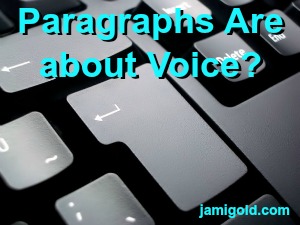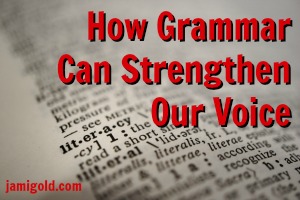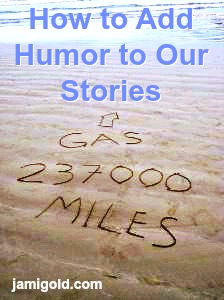We’ve probably all heard (or thought!) that description is boring or the part readers skip. Yet our stories need description or else be confusing. Marcy Kennedy joins us today to share 5 tips to empower and add interest to our description by using contrast.
Pin It
Read More
Our characters have to overcome many obstacles throughout our plot, but changing the obstacles doesn’t always fix story problems. Sure, sometimes an obstacle doesn’t fit the story, but too often, the obstacle itself isn’t what’s broken—it’s the storytelling around the obstacle.
Pin It
Read More
From school, we’re probably all familiar with using topic sentences to break ideas into paragraphs in non-fiction, but the rules are different for fiction. Choosing where to put paragraph breaks is one of the most voice-dependent decisions we can make as writers.
Pin It
Read More
Our stories consist of many elements—from backstory to dialogue—that each contribute to our story. Yet we can overdo those elements with an information dump. How can we include the different elements while making sure we don’t cross over into Info Dump Land? Let’s talk options…
Pin It
Read More
For every aspect of our story, we have to find the right balance. One element many writers struggle with is description: too little leaves our readers floating without an anchor, and too much drags our story’s pacing. So how do we find the right amount and know whether we need more or need to cut?
Pin It
Read More
If we’ve ever had a friend ramble or go off on tangents when describing a movie, we understand how story structure can help make stories more enjoyable. In other words, good story structure is an important element of good storytelling. Here’s how we can learn to analyze the structure of stories…
Pin It
Read More
Many of us start down the writing path without knowing the grammar rules. However, it’s best to know the rules before deciding to break them, especially as the proper use (and abuse) of grammar rules can strengthen our voice. Today’s guest post from Julie Glover shows how grammar can make a difference.
Pin It
Read More
My Elements of a Scene Checklist helps us identify whether a scene is truly necessary and contributing to our story by making sure it fulfills a story purpose. The same judgment criteria can apply to subplots as well. Let’s take a look at how can we make sure our tangents and subplots are adding to the story and not acting as a distraction.
Pin It
Read More
Most genres benefit from including touches of humor here or there—even the dark and angsty stories. But I’m not naturally a funny person, so I jumped at the chance to host an expert on comedy writing. Rhoda Baxter is here to share her tips that will help us add humor to any genre.
Pin It
Read More
If you’re anything like me, you might have a love/hate relationship with revisions. I love seeing my story strengthen and improve, but I hate the struggle. Today my guest poster is sharing a worksheet to help us find the important aspects of each scene so we can revise without tears.
Pin It
Read More










